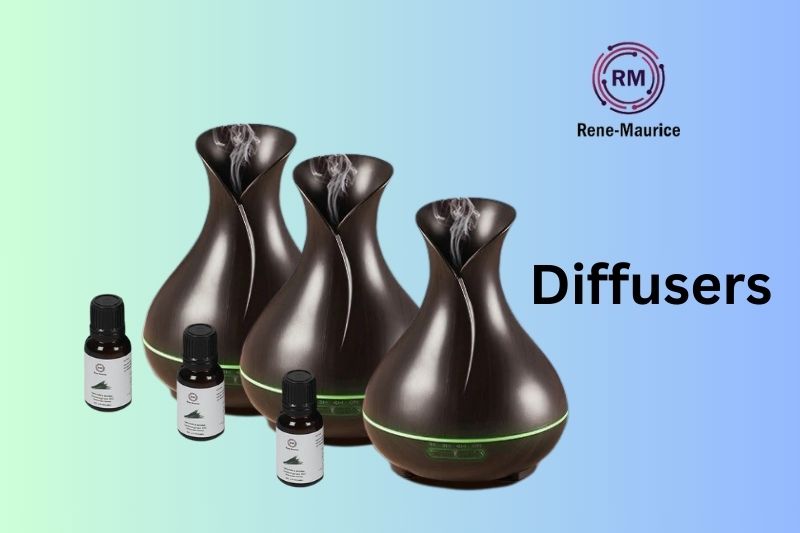
Exploring the Impact of Diffusers on Room Moisture Levels
Step into a world where the air is pure and invigorating, where relaxation meets rejuvenation. Have you ever wondered how to enhance the humidity levels in your space while enjoying the benefits of aromatherapy? Look no further than a humble yet powerful tool – the diffusers. In this blog post, we will explore how using a diffuser can not only elevate humidity but also transform your environment into a sanctuary of wellness and tranquility. Let’s dive in!
What is a Diffuser and How Does it Work?
A diffuser is a device designed to disperse essential oils or water into the air, creating a fragrant and therapeutic atmosphere. There are various types of diffusers available, each functioning in its unique way to release aromatic molecules. Ultrasonic diffusers use ultrasonic vibrations to break down essential oils into micro-particles that are then dispersed as mist. Nebulizing diffusers operate without water and disperse pure essential oil particles into the air, maintaining their potency.
Heat diffusers utilize heat to evaporate essential oils but may alter their chemical composition due to high temperatures. Evaporative diffusers rely on airflow to evaporate essential oils from a pad or wick. Each type of diffuser offers different advantages and considerations when it comes to enhancing humidity levels in your space while enjoying the benefits of aromatherapy.
The Relationship Between Humidity and Air Quality
Maintaining the right humidity levels in your home is not just about comfort; it also plays a vital role in ensuring good air quality. When humidity levels are too low, the air can become dry and irritate your respiratory system, leading to issues like dry skin, sore throat, and even increased susceptibility to infections.
On the other hand, excessive humidity can create a breeding ground for mold, mildew, and dust mites which thrive in damp environments. These allergens can trigger asthma attacks and worsen allergies. By finding the right balance of moisture in the air by using a diffuser to increase humidity when needed, you can help create an environment that promotes better respiratory health and overall well-being.
Benefits of Using a Diffuser to Increase Humidity
Adding a diffuser to your space can offer more than just pleasant scents. When it comes to increasing humidity levels, diffusers are a game-changer. Not only do they help in creating a more comfortable environment, but they also bring numerous benefits to your overall well-being.
By using essential oils with your aroma diffuser electric, you can not only humidify the air but also enjoy the therapeutic properties of these natural extracts. From lavender for relaxation to eucalyptus for congestion relief, the options are endless and catered specifically to your needs.
Moreover, maintaining optimal humidity levels can prevent dry skin and respiratory issues caused by excessively dry air. This is particularly beneficial during colder months when indoor heating tends to lower humidity levels significantly.
In addition to improving air quality, using a diffuser for humidifying purposes can enhance your mood and mental clarity. The subtle aroma combined with increased moisture in the air creates a soothing ambiance that promotes relaxation and focus throughout the day.
Different Types of Diffusers
When it comes to diffusers, there are various types to choose from based on your preferences and needs.
One common type is the ultrasonic diffuser, which uses water and vibrations to disperse essential oils into the air as a fine mist. This type is popular for its ability to humidify while also providing aromatherapy benefits.
Another option is the nebulizing diffuser, known for not requiring water or heat. Instead, it breaks down oils into a concentrated form before releasing them into the air. This type is great for those looking for strong therapeutic effects.
For a more stylish choice, consider a ceramic diffuser that adds an aesthetic touch to any space while quietly dispersing essential oils. These diffusers often come in unique designs that can complement your decor seamlessly.
No matter which type you choose, each offers its own set of features and benefits to enhance your living environment through increased humidity levels and soothing scents.
Essential Oils for Humidifying with a Diffuser
Essential oils are not just for making your space smell nice – they can also be used to help increase humidity levels when used in a diffuser. Certain essential oils have properties that can aid in adding moisture to the air, which is especially beneficial during dry seasons or in arid climates.
Lavender essential oil, known for its calming scent, is also great for humidifying as it can help soothe irritated skin and promote relaxation. Eucalyptus oil not only has a refreshing aroma but also acts as a decongestant, perfect for adding moisture while providing respiratory relief.
Citrus oils like lemon or orange can invigorate your senses while aiding in humidification. Additionally, tea tree oil has antimicrobial properties that can purify the air while helping to increase humidity levels.
When selecting essential oils for humidifying with a diffuser, consider blends that offer both aromatherapy benefits and moisture-boosting effects for a well-rounded experience.
Tips for Properly Using a Diffuser to Increase Humidity
To ensure you are effectively increasing humidity levels with your diffuser, it’s important to follow some key tips. Choose the right essential oils that are known for their humidifying properties, such as lavender or eucalyptus. Next, make sure to add the recommended amount of water to your diffuser – too much or too little can affect its performance. Additionally, place your diffuser on a stable surface and away from direct sunlight or heat sources.
Remember to clean your diffuser regularly to prevent mold and bacteria buildup which can impact air quality. It’s also beneficial to use distilled water instead of tap water to avoid mineral deposits in the machine. Experiment with different diffusion settings and timings based on the size of the room you want to humidify for optimal results.
By incorporating these simple yet effective tips into your diffusing routine, you can create a comfortable and healthy environment in your living space effortlessly!
Also Read:- Aroma Diffuser vs Air Purifier: Which One is Right for You?
Conclusion: Making an Informed Decision About Using a Diffuser for Humidity Levels
In your journey to create a comfortable and well-balanced environment, using a diffuser to increase humidity levels can be a valuable tool. By understanding how diffusers work, the relationship between humidity and air quality, the benefits they offer, the different types available, suitable essential oils for humidifying purposes, and tips for proper use, you are equipped to make an informed decision.
Remember that maintaining optimal humidity levels contributes to better respiratory health, skin hydration, and overall well-being. Whether you choose a traditional ultrasonic diffuser or opt for something more advanced like an evaporative or heat diffuser based on your needs and preferences – incorporating one into your daily routine can elevate the atmosphere of any space.
By harnessing the power of water vapor with essential oils through a diffuser device in moderation and with care, you have taken another step towards creating a harmonious indoor environment where both mind and body can thrive.






Leave Your Comment